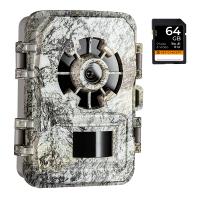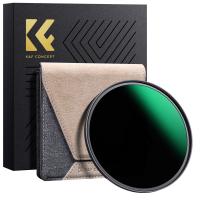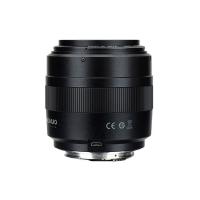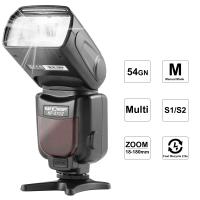How Does An Nd Filter Affect White Balance?
Neutral Density (ND) filters are a staple in the toolkit of photographers and videographers, offering a way to control exposure without altering the color balance of the scene. However, the use of ND filters can sometimes have unintended effects on white balance, which can be a critical aspect of achieving accurate color representation in your images or videos. In this article, we will explore how ND filters affect white balance, the science behind these effects, and practical solutions to mitigate any issues that arise.

Understanding ND Filters
ND filters are designed to reduce the amount of light entering the camera lens without affecting the color of the light. They are essentially darkened pieces of glass or resin that come in various strengths, measured in stops. For example, an ND2 filter reduces the light by one stop, an ND4 by two stops, and so on. This reduction in light allows photographers to use wider apertures or slower shutter speeds in bright conditions, enabling creative effects like shallow depth of field or motion blur.
The Science Behind White Balance
White balance is the process of removing unrealistic color casts so that objects that appear white in person are rendered white in your photo or video. Cameras achieve this by adjusting the colors in the image to compensate for the color temperature of the light source. Color temperature is measured in Kelvin (K), with lower values indicating warmer (more yellow/red) light and higher values indicating cooler (more blue) light.
How ND Filters Can Affect White Balance
While ND filters are designed to be "neutral," meaning they should not affect the color balance of the scene, in practice, this is not always the case. Several factors can cause an ND filter to affect white balance:
1. Quality of the Filter: Lower-quality ND filters may not be perfectly neutral and can introduce a color cast. This is often due to the materials used in the filter or the manufacturing process.
2. Filter Density: Higher-density ND filters (e.g., ND64, ND1000) are more likely to introduce color casts than lower-density filters. This is because the higher the density, the more material the light has to pass through, increasing the chances of color shifts.
3. Stacking Filters: Using multiple ND filters together can exacerbate color cast issues. Each filter may introduce a slight color shift, and when combined, these shifts can become more pronounced.
Identifying Color Casts
Color casts introduced by ND filters can vary. Common color shifts include:
- Magenta Cast: This is a common issue with many ND filters, especially those of lower quality. It can make the image appear warmer and more reddish.
- Green Cast: Some ND filters, particularly those made with certain types of glass or coatings, can introduce a greenish tint to the image.
- Blue Cast: Higher-density ND filters can sometimes introduce a blue cast, making the image appear cooler.
Mitigating White Balance Issues
To ensure accurate color representation when using ND filters, consider the following strategies:
1. Invest in High-Quality Filters: High-quality ND filters are more likely to be truly neutral and less likely to introduce color casts. Brands like B+W, Hoya, and Lee Filters are known for their quality and reliability.
2. Custom White Balance: Setting a custom white balance in-camera can help mitigate color casts. This involves taking a photo of a neutral gray card under the same lighting conditions and using it to set the white balance.
3. Post-Processing Adjustments: If you notice a color cast in your images, you can correct it in post-processing software like Adobe Lightroom or Photoshop. Use the white balance tools to adjust the color temperature and tint until the colors appear accurate.
4. Use a Color Checker: A color checker is a tool with a series of colored squares that represent known color values. By photographing the color checker under the same lighting conditions and using it to calibrate your white balance in post-processing, you can achieve more accurate colors.
5. Avoid Stacking Filters: If possible, use a single ND filter of the appropriate density rather than stacking multiple filters. This reduces the chances of introducing multiple color casts.
Practical Scenarios and Solutions
Let's consider a few practical scenarios where ND filters might affect white balance and how to address these issues:
Scenario 1: Landscape Photography
You are shooting a landscape scene with a high-density ND filter to achieve a long exposure effect. Upon reviewing your images, you notice a magenta cast.
Solution: First, ensure you are using a high-quality ND filter. If the cast persists, set a custom white balance using a gray card. In post-processing, use the white balance adjustment tools to fine-tune the color balance.
Scenario 2: Portrait Photography
You are photographing a subject outdoors in bright sunlight and using an ND filter to allow for a wider aperture. The images have a slight greenish tint.
Solution: Again, start with a high-quality ND filter. Use a custom white balance setting by photographing a gray card. In post-processing, use the white balance tools to correct any remaining color cast.
Scenario 3: Video Production
You are shooting a video in a controlled lighting environment with an ND filter to maintain a specific aperture and shutter speed. The footage has a blue cast.
Solution: Use a color checker to set a custom white balance in-camera. In post-production, use color grading tools to adjust the white balance and remove the blue cast.
While ND filters are invaluable tools for controlling exposure, they can sometimes affect white balance, leading to color casts in your images or videos. By understanding the factors that contribute to these issues and employing strategies to mitigate them, you can achieve accurate color representation and maintain the creative control that ND filters provide. Investing in high-quality filters, setting custom white balances, and making post-processing adjustments are all effective ways to ensure your final images are true to life.

































There are no comments for this blog.